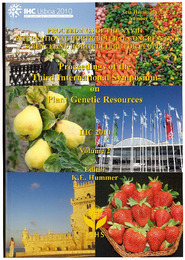Por favor, use este identificador para citar o enlazar este ítem:
https://hdl.handle.net/11000/34553Registro completo de metadatos
| Campo DC | Valor | Lengua/Idioma |
|---|---|---|
| dc.contributor.author | Alonso Sanchis, Aránzazu | - |
| dc.contributor.author | Salazar, J.A. | - |
| dc.contributor.author | Arroyo, A. | - |
| dc.contributor.author | Grau Sánchez, Adrián | - |
| dc.contributor.author | García Martínez, Santiago | - |
| dc.contributor.author | Serrano Mula, María | - |
| dc.contributor.author | Ruiz Martínez, Juan José | - |
| dc.contributor.other | Departamentos de la UMH::Biología Aplicada | es_ES |
| dc.date.accessioned | 2025-01-15T20:02:10Z | - |
| dc.date.available | 2025-01-15T20:02:10Z | - |
| dc.date.created | 2011-12 | - |
| dc.identifier.citation | Acta Horticulturae 918 | es_ES |
| dc.identifier.isbn | 978-90-6605-554-4 | - |
| dc.identifier.issn | 0567-7572 | - |
| dc.identifier.uri | https://hdl.handle.net/11000/34553 | - |
| dc.description.abstract | Fruits of cultivated tomato exhibit a high phenotypic diversity, having varied sizes, shapes and colours. This phenotypic variation is particularly apparent in heirloom cultivars. A set of cultivars, including many genotypes with fruit described as brown, black and purple were screened for quality and functional attributes. The collection includes mainly heirloom tomato cultivars obtained from TomatoFest (Little River, California, USA; http://www.tomatofest.com) and some traditional Spanish cultivars. Plants were grown in the open air, and their fruits were analyzed for colour, titratable acidity and soluble solids content (TSS). In a subset of the collection we have studied functional attributes, as the antioxidant activity and the polyphenols content. Wide variation was observed in each of the measurements. For example, the soluble solids content varied between 3.91 and 7.21°Brix, and the titratable acidity between 0.49 and 1.07 g/100 g. Very high levels of diversity were also found for the functional attributes analyzed, the antioxidant activity varying between 7.90 and 56.82 mg/100 g and the polyphenols content between 26.73 and 43.17 mg/100 g. Data obtained have been analyzed for their mutual relationships. We observed significant correlations among polyphenols content and the titratable acidity, soluble solids content and anti¬oxidant activity. These results could aid tomato breeders working on the development of new cultivars. The diversity found in heirloom tomato cultivars could be a rich source of germplasm for quality and functional attributes | es_ES |
| dc.format | application/pdf | es_ES |
| dc.format.extent | 7 | es_ES |
| dc.language.iso | eng | es_ES |
| dc.publisher | International Society for Horticultural Science | es_ES |
| dc.relation.ispartof | Proceedings of the XXVIII International Horticultural Congress on Science and Horticulture for People. (IHC2010): III International Symposium on Plant Genetic Resources | es_ES |
| dc.rights | info:eu-repo/semantics/openAccess | es_ES |
| dc.rights | Attribution-NonCommercial-NoDerivatives 4.0 Internacional | * |
| dc.rights.uri | http://creativecommons.org/licenses/by-nc-nd/4.0/ | * |
| dc.subject | Biodiversity | es_ES |
| dc.subject | Antioxidant activity | es_ES |
| dc.subject | Polyphenols | es_ES |
| dc.title | Screening a diverse collection of heirloom tomato cultivars for quality and functional attributes | es_ES |
| dc.type | info:eu-repo/semantics/article | es_ES |
| dc.relation.publisherversion | https://doi.org/10.17660/ActaHortic.2011.918.69 | es_ES |

Ver/Abrir:
Acta Horticulturae TomatoFest.pdf
967,87 kB
Adobe PDF
Compartir:
 La licencia se describe como: Atribución-NonComercial-NoDerivada 4.0 Internacional.
La licencia se describe como: Atribución-NonComercial-NoDerivada 4.0 Internacional.
.png)